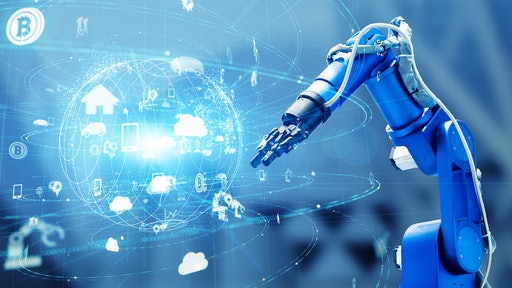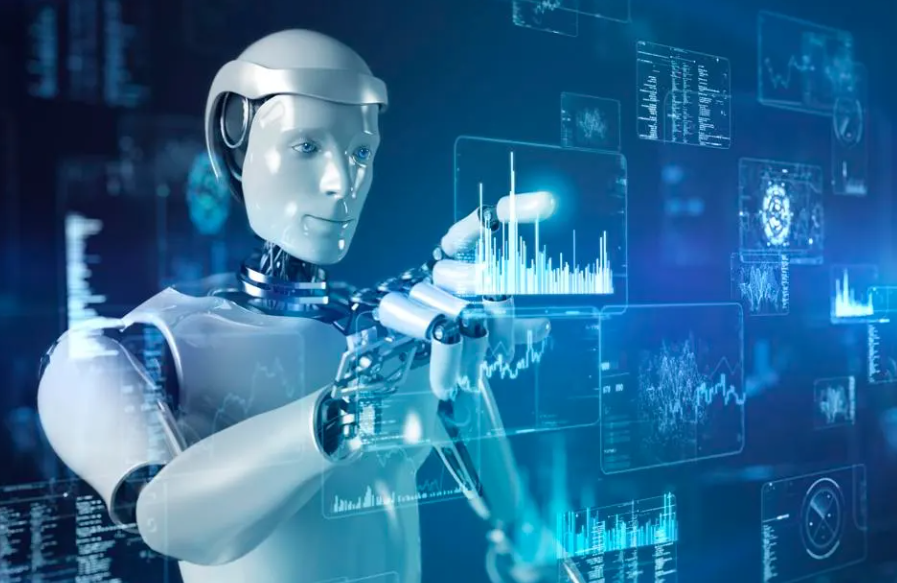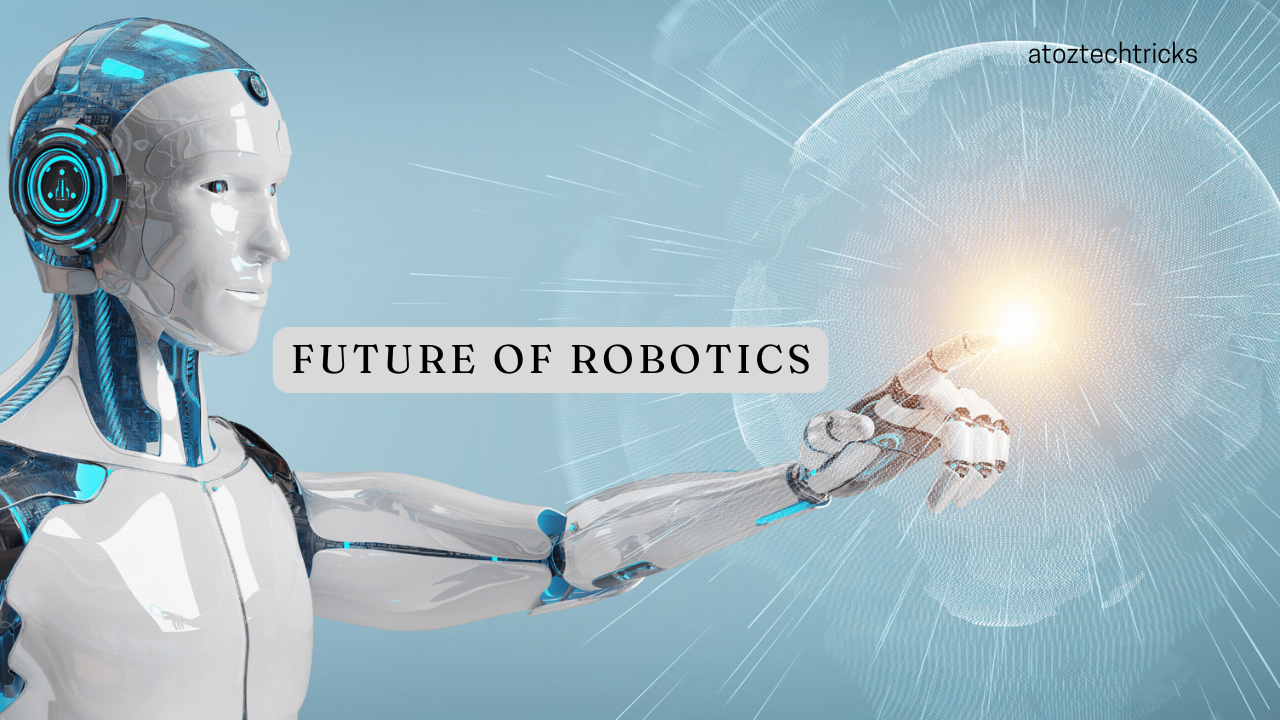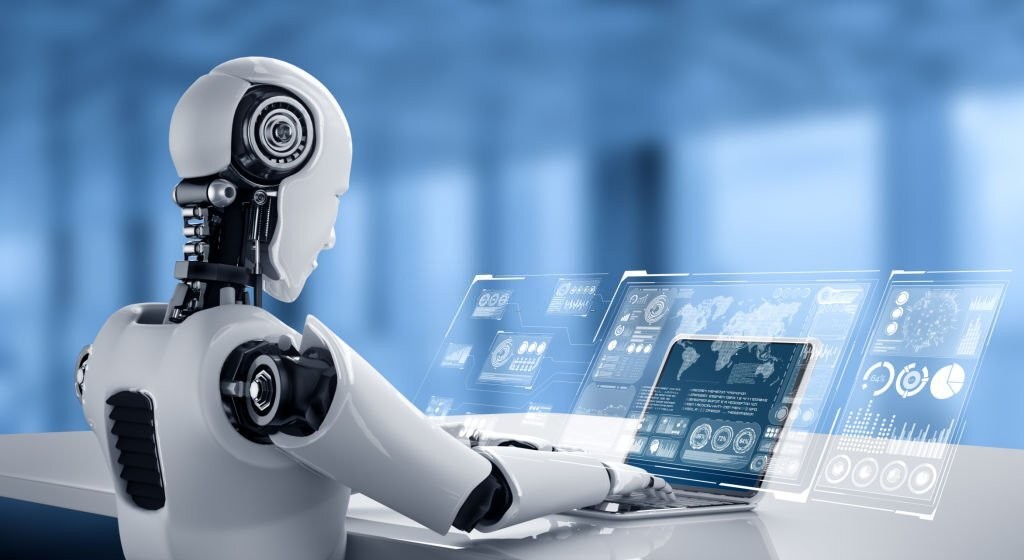Robotics, once a field confined to science fiction, has rapidly evolved into a cornerstone of modern technology. From industrial automation to healthcare, robotics is transforming industries and reshaping the future. As we stand on the cusp of even more profound advancements, it is essential to explore the innovations driving this field and the diverse applications that will define the future of robotics. This article delves into the cutting-edge developments in robotics, the potential applications across various sectors, and the challenges and ethical considerations that accompany these advancements.
The Evolution of Robotics
Early Beginnings and Industrial Automation
The journey of robotics began with the development of early machines designed to automate repetitive tasks. In the 1950s and 1960s, the first industrial robots were introduced, revolutionizing manufacturing processes. These early robots, such as Unimate, which was deployed on General Motors’ assembly line in 1961, were designed to perform tasks like welding and material handling with greater precision and efficiency than human workers.
Over the decades, industrial robots have become more sophisticated, incorporating advanced sensors, artificial intelligence (AI), and machine learning algorithms. These innovations enabled robots to perform more complex tasks, such as assembling intricate components and working alongside humans in collaborative environments. The advent of the Internet of Things (IoT) further enhanced industrial robotics by enabling seamless communication between machines and real-time data analysis.
The Rise of Service and Social Robots
While industrial robots dominated the early years of robotics, the 21st century has seen the emergence of service and social robots. These robots are designed to interact with humans and perform tasks in non-industrial settings, such as healthcare, hospitality, and domestic environments.
Service robots, like those used in healthcare, assist with tasks such as patient monitoring, medication administration, and physical therapy. Social robots, on the other hand, are designed to engage with humans on a more personal level. Examples include companion robots for the elderly and educational robots for children. These robots use natural language processing, facial recognition, and emotional AI to interact with users in a more human-like manner.
The Current State of Robotics
Today, robotics is a multidisciplinary field that incorporates AI, machine learning, computer vision, and advanced materials. Robots are becoming more autonomous, capable of learning from their environment and making decisions in real-time. This level of sophistication is paving the way for robots to take on roles that were once thought to be the exclusive domain of humans.
One of the most significant advancements in recent years is the development of soft robotics. Unlike traditional rigid robots, soft robots are made from flexible materials that mimic the movements of living organisms. This flexibility allows them to perform delicate tasks, such as handling fragile objects or navigating complex environments.
Another groundbreaking development is swarm robotics, where multiple robots work together as a cohesive unit. Inspired by the behaviour of social insects like ants and bees, swarm robots can accomplish tasks that are beyond the capabilities of individual robots. This approach is being explored for applications such as search and rescue missions, environmental monitoring, and even space exploration.
Innovations Driving the Future of Robotics
Artificial Intelligence and Machine Learning
Artificial intelligence (AI) and machine learning are the driving forces behind the next generation of robots. By integrating AI, robots can process vast amounts of data, learn from their experiences, and make autonomous decisions. Machine learning algorithms allow robots to improve their performance over time, adapting to new situations and optimizing their actions.
For instance, in manufacturing, AI-powered robots can predict equipment failures before they occur, minimizing downtime and reducing maintenance costs. In healthcare, AI enables robots to analyze medical data and assist in diagnosing diseases, leading to more accurate and timely treatment.
Human-Robot Collaboration (Cobots)
Collaborative robots, or cobots, are designed to work alongside humans in shared environments. Unlike traditional robots, which are often separated from human workers for safety reasons, cobots are equipped with advanced sensors and AI that allow them to interact safely and efficiently with humans.
Cobots are increasingly being used in industries such as automotive, electronics, and logistics, where they assist with tasks that require a combination of human dexterity and robotic precision. These robots are designed to be user-friendly, with intuitive interfaces that allow workers to easily program and control them. The rise of cobots is expected to lead to a new era of human-robot collaboration, where robots enhance human productivity rather than replace human workers.
Autonomous Vehicles and Drones
Autonomous vehicles and drones represent one of the most exciting applications of robotics. Self-driving cars, trucks, and delivery drones are poised to revolutionize transportation and logistics by reducing the need for human drivers and increasing efficiency.
Autonomous vehicles rely on a combination of sensors, cameras, radar, and AI to navigate their environment and make real-time decisions. Companies like Tesla, Waymo, and Uber are at the forefront of developing self-driving cars, while Amazon and Google are exploring the use of delivery drones for last-mile logistics.
The potential impact of autonomous vehicles extends beyond transportation. In agriculture, autonomous tractors and drones can optimize planting, irrigation, and harvesting processes, leading to increased crop yields and reduced environmental impact. In the military, autonomous drones and ground vehicles can carry out reconnaissance missions, reducing the risk to human soldiers.
Robotics in Healthcare
The healthcare industry is one of the most promising areas for robotics innovation. Medical robots are already being used for tasks such as surgery, rehabilitation, and patient care, but the future holds even greater potential.
Surgical robots, like the da Vinci system, allow surgeons to perform minimally invasive procedures with greater precision and control. These robots are equipped with high-definition cameras and robotic arms that can make tiny incisions, reducing the risk of complications and speeding up recovery times.
Rehabilitation robots assist patients in recovering from injuries or surgeries by guiding them through physical therapy exercises. These robots can adapt to the patient’s progress, providing personalized therapy that enhances recovery.
In the future, we can expect to see more advanced medical robots that are capable of diagnosing diseases, administering treatments, and even performing complex surgeries autonomously. AI-powered diagnostic robots could analyze medical images and patient data to identify early signs of illness, while robotic caregivers could assist elderly or disabled individuals with daily tasks.
Robotics in Space Exploration
Space exploration is another area where robotics is set to play a crucial role. With missions to Mars and beyond on the horizon, robots will be essential for exploring and colonizing other planets.
Robotic rovers, like NASA’s Perseverance, are already exploring the surface of Mars, collecting data and conducting experiments. Future missions could involve swarms of robots working together to build habitats, extract resources, and maintain equipment on distant planets.
In addition to planetary exploration, robots will play a key role in maintaining and repairing spacecraft. Autonomous robots could perform routine maintenance tasks on the International Space Station (ISS) or even build structures in space, reducing the need for human astronauts to perform dangerous spacewalks.
Innovations in Soft Robotics
Soft robotics is an emerging field that focuses on creating robots made from flexible, elastic materials that can mimic the movements of living organisms. This flexibility allows soft robots to perform delicate tasks that would be impossible for traditional rigid robots.
For example, soft robots are being developed for use in medical procedures, where they can navigate through the human body without causing damage to tissues or organs. These robots could be used for minimally invasive surgeries, drug delivery, or even targeted cancer treatments.
In addition to healthcare, soft robots have potential applications in fields such as agriculture, where they could be used to handle delicate crops without bruising them, and in search and rescue missions, where their flexibility would allow them to navigate through rubble and debris.

Advancements in Humanoid Robots
Humanoid robots, designed to resemble and interact with humans, are becoming increasingly sophisticated. These robots are being developed for a wide range of applications, from customer service and entertainment to education and healthcare.
One of the most well-known humanoid robots is Sophia, developed by Hanson Robotics. Sophia can engage in conversations, recognize faces, and express a range of emotions. While still in its early stages, humanoid robotics has the potential to revolutionize industries that require human-like interaction, such as hospitality and retail.
In the future, humanoid robots could serve as personal assistants, providing companionship to the elderly, tutoring students, or assisting people with disabilities. The development of humanoid robots also raises important questions about human-robot relationships and the ethical implications of creating machines that closely resemble humans.
Robotics in Agriculture
Agriculture is another sector that stands to benefit greatly from robotics. With the global population expected to reach nearly 10 billion by 2050, there is a growing need for sustainable and efficient farming practices. Robotics offers a solution by automating labour-intensive tasks, optimizing resource use, and increasing crop yields.
Agricultural robots, or robots, are being developed to perform tasks such as planting, weeding, and harvesting. These robots use advanced sensors and AI to navigate fields, identify crops, and perform precise actions. For example, robots equipped with computer vision can distinguish between crops and weeds, allowing for targeted weed removal without the use of herbicides.
Drones are also being used in agriculture to monitor crop health, assess soil conditions, and optimize irrigation. By collecting and analyzing data from the air, drones can help farmers make informed decisions about when to plant, water, and harvest their crops.
In the future, we can expect to see fully automated farms where robots handle every aspect of the farming process, from planting seeds to harvesting crops. This level of automation could lead to more sustainable and efficient food production, helping to address global food security challenges.
How Digital Transformation is Impacting Traditional Industries
Robotics in the Military and Defense
The military and defence sectors have long been at the forefront of robotics innovation. Robots are being used for a wide range of applications, from reconnaissance and surveillance to bomb disposal and combat.
One of the most significant advancements in military robotics is the development of unmanned aerial vehicles (UAVs), or drones. These drones are used for surveillance, target acquisition, and precision strikes, allowing military forces to carry out missions with reduced risk to human soldiers.
Ground robots are also being developed for tasks such as bomb disposal, mine detection, and reconnaissance in dangerous environments. These robots are equipped with cameras, sensors, and robotic arms that allow them to perform tasks that would be too dangerous for human soldiers.
In the future, we may see the development of fully autonomous combat robots that can operate independently on the battlefield. While the use of autonomous weapons raises significant ethical and legal questions, there is no doubt that robotics will continue to play a crucial role in military operations.
Applications of Robotics Across Industries
Healthcare and Medicine
The healthcare industry is one of the most promising areas for robotics innovation. Medical robots are already being used for tasks such as surgery, rehabilitation, and patient care, but the future holds even greater potential.
Surgical robots, like the da Vinci system, allow surgeons to perform minimally invasive procedures with greater precision and control. These robots are equipped with high-definition cameras and robotic arms that can make tiny incisions, reducing the risk of complications and speeding up recovery times.
Rehabilitation robots assist patients in recovering from injuries or surgeries by guiding them through physical therapy exercises. These robots can adapt to the patient’s progress, providing personalized therapy that enhances recovery.
In the future, we can expect to see more advanced medical robots that are capable of diagnosing diseases, administering treatments, and even performing complex surgeries autonomously. AI-powered diagnostic robots could analyze medical images and patient data to identify early signs of illness, while robotic caregivers could assist elderly or disabled individuals with daily tasks.
Manufacturing and Industry
Manufacturing has been the traditional stronghold of robotics, with industrial robots playing a crucial role in automating production lines. Today, robots are more advanced than ever, capable of performing tasks that require precision, speed, and adaptability.
In addition to traditional industrial robots, collaborative robots (cobots) are becoming increasingly popular in manufacturing. Cobots are designed to work alongside human workers, assisting with tasks such as assembly, packaging, and quality control. These robots are equipped with advanced sensors and AI that allow them to interact safely and efficiently with humans.
Robotics is also transforming the logistics and supply chain industry. Autonomous robots are being used to automate warehouses, where they handle tasks such as sorting, packing, and transporting goods. Drones are being used for inventory management and last-mile delivery, reducing the time and cost of logistics operations.

Agriculture and Food Production
Agriculture is another sector that stands to benefit greatly from robotics. With the global population expected to reach nearly 10 billion by 2050, there is a growing need for sustainable and efficient farming practices. Robotics offers a solution by automating labour-intensive tasks, optimizing resource use, and increasing crop yields.
Agricultural robots, or robots, are being developed to perform tasks such as planting, weeding, and harvesting. These robots use advanced sensors and AI to navigate fields, identify crops, and perform precise actions. For example, robots equipped with computer vision can distinguish between crops and weeds, allowing for targeted weed removal without the use of herbicides.
Drones are also being used in agriculture to monitor crop health, assess soil conditions, and optimize irrigation. By collecting and analyzing data from the air, drones can help farmers make informed decisions about when to plant, water, and harvest their crops.
In the future, we can expect to see fully automated farms where robots handle every aspect of the farming process, from planting seeds to harvesting crops. This level of automation could lead to more sustainable and efficient food production, helping to address global food security challenges.
Space Exploration
Space exploration is another area where robotics is set to play a crucial role. With missions to Mars and beyond on the horizon, robots will be essential for exploring and colonizing other planets.
Robotic rovers, like NASA’s Perseverance, are already exploring the surface of Mars, collecting data and conducting experiments. Future missions could involve swarms of robots working together to build habitats, extract resources, and maintain equipment on distant planets.
In addition to planetary exploration, robots will play a key role in maintaining and repairing spacecraft. Autonomous robots could perform routine maintenance tasks on the International Space Station (ISS) or even build structures in space, reducing the need for human astronauts to perform dangerous spacewalks.
Defence and Security
The military and defence sectors have long been at the forefront of robotics innovation. Robots are being used for a wide range of applications, from reconnaissance and surveillance to bomb disposal and combat.
One of the most significant advancements in military robotics is the development of unmanned aerial vehicles (UAVs), or drones. These drones are used for surveillance, target acquisition, and precision strikes, allowing military forces to carry out missions with reduced risk to human soldiers.
Ground robots are also being developed for tasks such as bomb disposal, mine detection, and reconnaissance in dangerous environments. These robots are equipped with cameras, sensors, and robotic arms that allow them to perform tasks that would be too dangerous for human soldiers.
In the future, we may see the development of fully autonomous combat robots that can operate independently on the battlefield. While the use of autonomous weapons raises significant ethical and legal questions, there is no doubt that robotics will continue to play a crucial role in military operations.
Challenges and Ethical Considerations
Job Displacement and Economic Impact
One of the most significant concerns surrounding the future of robotics is the potential for job displacement. As robots become more capable of performing tasks traditionally done by humans, there is a risk that many jobs will become obsolete. This is particularly true in industries such as manufacturing, logistics, and agriculture, where automation is already replacing human labour.
While robotics has the potential to create new jobs in fields such as robot design, maintenance, and programming, there is a concern that the transition could lead to significant economic disruption. Governments and businesses will need to invest in education and retraining programs to help workers adapt to the changing job market.
Ethical Concerns in Autonomous Systems
As robots become more autonomous, ethical considerations become increasingly important. For example, the use of autonomous weapons in warfare raises questions about accountability and the potential for unintended consequences. Who is responsible if an autonomous weapon makes a mistake? How do we ensure that robots adhere to ethical guidelines in situations where human lives are at stake?
Another ethical concern is the use of robots in healthcare and caregiving. While robots can provide valuable assistance to elderly or disabled individuals, there is a risk that overreliance on robots could lead to a loss of human connection and care. It is essential to strike a balance between leveraging the benefits of robotics and ensuring that human dignity and well-being are preserved.
Privacy and Security Issues
The widespread use of robots, particularly in public spaces and private homes, raises concerns about privacy and security. Robots equipped with cameras, microphones, and sensors can collect vast amounts of data about individuals, leading to potential breaches of privacy. There is also the risk that robots could be hacked or manipulated to carry out malicious activities.
To address these concerns, it is essential to develop robust security protocols and establish clear guidelines for data collection and use. Regulations will need to be put in place to ensure that robots are designed and deployed in a manner that respects individuals’ privacy and security.
Social and Psychological Impact
The increasing presence of robots in everyday life could have significant social and psychological effects. For example, the use of social robots as companions or caregivers could lead to changes in human relationships and social dynamics. There is also a concern that the widespread use of robots could lead to a sense of alienation or loss of purpose for individuals whose jobs have been replaced by automation.
It is important to consider the social and psychological impact of robotics and to take steps to mitigate potential negative effects. This could include promoting human-robot interaction research, fostering public dialogue about the role of robots in society, and developing policies that prioritize human well-being.
The future of robotics is full of promise and potential. Innovations in AI, machine learning, soft robotics, and autonomous systems are driving the field forward, opening up new possibilities for applications across industries. From healthcare and manufacturing to agriculture and space exploration, robotics is set to transform the way we live and work.
However, as we embrace the advancements in robotics, it is crucial to address the challenges and ethical considerations that come with it. Job displacement, privacy concerns, and the social impact of robotics are issues that must be carefully managed to ensure that the benefits of robotics are realized without compromising human values and well-being.
As we look to the future, the key to unlocking the full potential of robotics lies in a balanced approach that leverages technological advancements while addressing the ethical, social, and economic implications. By doing so, we can create a future where robots enhance our lives, work alongside us, and help us tackle some of the most pressing challenges of our time.





